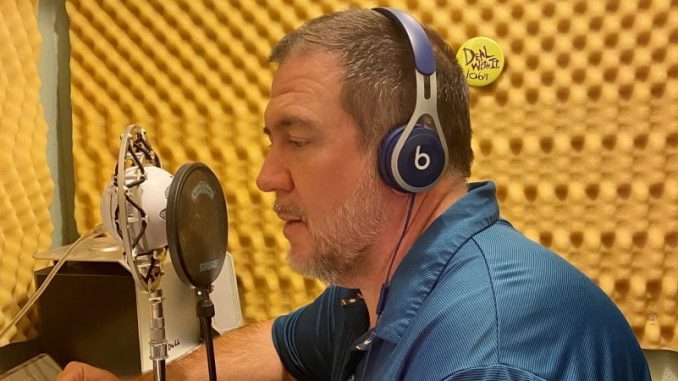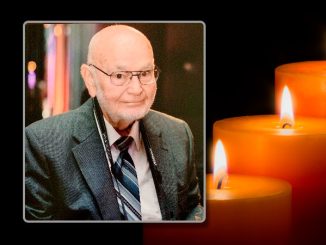
With an impressive list of big-name corporate clients like Fedex, Chevron, Exxon, LSU, UNO Institute and Winn Dixie, most of Shelby Lanier’s Hahnville High students would be surprised to learn he leads a double life as a voiceover artist.
Voiceover artists like Lanier lend their voice for a fee to commercials and advertising, audiobooks, video games, educational and training videos, documentaries and health and wellness apps. While he previously did some commercial voiceover work, much of his current work revolves around narrating corporate in-house training and e-training modules.
Lanier, 55, got into voiceover work after leading a decades-long career in the broadcast industry.
“I worked in radio right out of high school,” Lanier said, beginning his broadcasting career around 1986. “While I was in radio, I went to UNO and got a degree in communications; that was going to be my lifelong career – broadcasting.”
His first job in broadcasting was working for a small daytime AM country station run out of a Port Sulfur area mobile home “in the middle of nowhere,” he said, as he reminisced on his early career. “I worked my way up and ended up working for Clear Channel, WNOE and some of the big [broadcasting] names in New Orleans.”
Life had different plans for Lanier, and he later left broadcasting to pursue a career in education. He currently works for the St. Charles Parish School System, where he teaches English and Speech. He has maintained his voiceover business, Lanier Voice Talent LLC, as a sideline over the years given his broadcasting career and contacts.
To make it today in voiceover work, Lanier said, newer voiceover artists typically need agents to attract a sufficient flow of work. He has an advantage in that he had a several decades-long career in radio with numerous industry contacts, so much so that he relies almost entirely on word-of-mouth for new clients and jobs, with no agent.
His advice to newbies wishing to start in voiceover work was to consider beginning with a simple demo audio file.
“Go online, grab some commercial copy, e-courses or scripts off of Google and read little pieces of them to put together a demo of different styles and talents you have with your voice,” he suggested. “That way you’ve got sort of an audio resume, and you’ll be able to showcase your voice.”
Lanier said when he first started in broadcasting, stations had to have lots of bulky equipment in order to operate. Given recent technological advancements, he was able to create his own home recording studio for his voiceover work with just a computer, microphone and extra space.
“I turned a closet in my home into a little sound booth that I soundproofed, wired it up with my microphones inside and all the recording gear outside the studio so that you don’t hear the electronic buzz,” Lanier explained. “I’m able to record that way, and I’ve got some editing software that I can put through a process and make [the recordings] sound clean and crisp.”
His voiceover work sometimes pops up in humorous and unexpected ways with family and friends, something he was reminded of when his two sons were old enough to drive.
“When my two sons got to driving age, and they had to take an online driver’s ed course on defensive driving to get a discount on the insurance; they logged on and paid for the course,” Lanier said. “They ended up listening to me because I was the guy that read the course 15 years earlier, I’d totally forgotten about it…when they cranked up the training module, it was me they had to listen to.”
At age 55 with the end of his education career in sight, Lanier says he has found it interesting how his broadcasting and education careers have come back to intersect each other.
He first got into broadcasting at the suggestion of a high school speech teacher, who assigned him a project to create and record a fake radio show on cassette tape. He performed so well with the assignment, his teacher suggested he consider making a living as a broadcaster.
“Several decades [later], I switched careers, and now I’m actually teaching speech in high school,” Lanier said. “It’s now come full circle for me – now I give my students projects …where they go home and do a fake radio or newscast, record it on their iPhones and bring it in to display to the class and get a grade for.”




Yes, it’s an honor to read the voice’s of the Guide-Herald each week and follow St.Charles Finest and Just-All-that’s to see their Great Highest they’ve reached and filtered their Craft’s into this Oh So Flourishing Parish!Continue to move forward and reach for the Stars St.Charles and carry us On into the Future we’re engaged!!//Ms.Janice